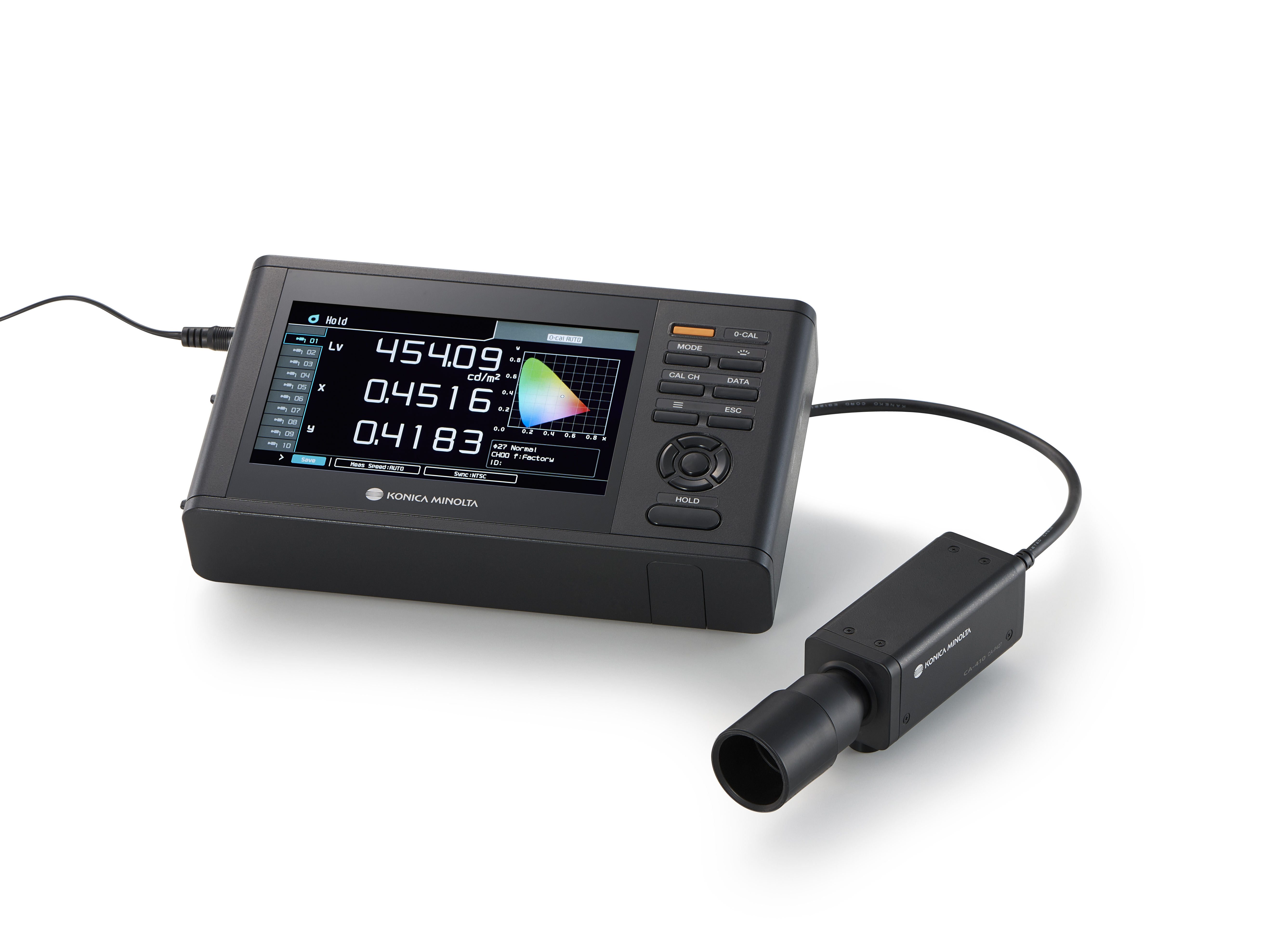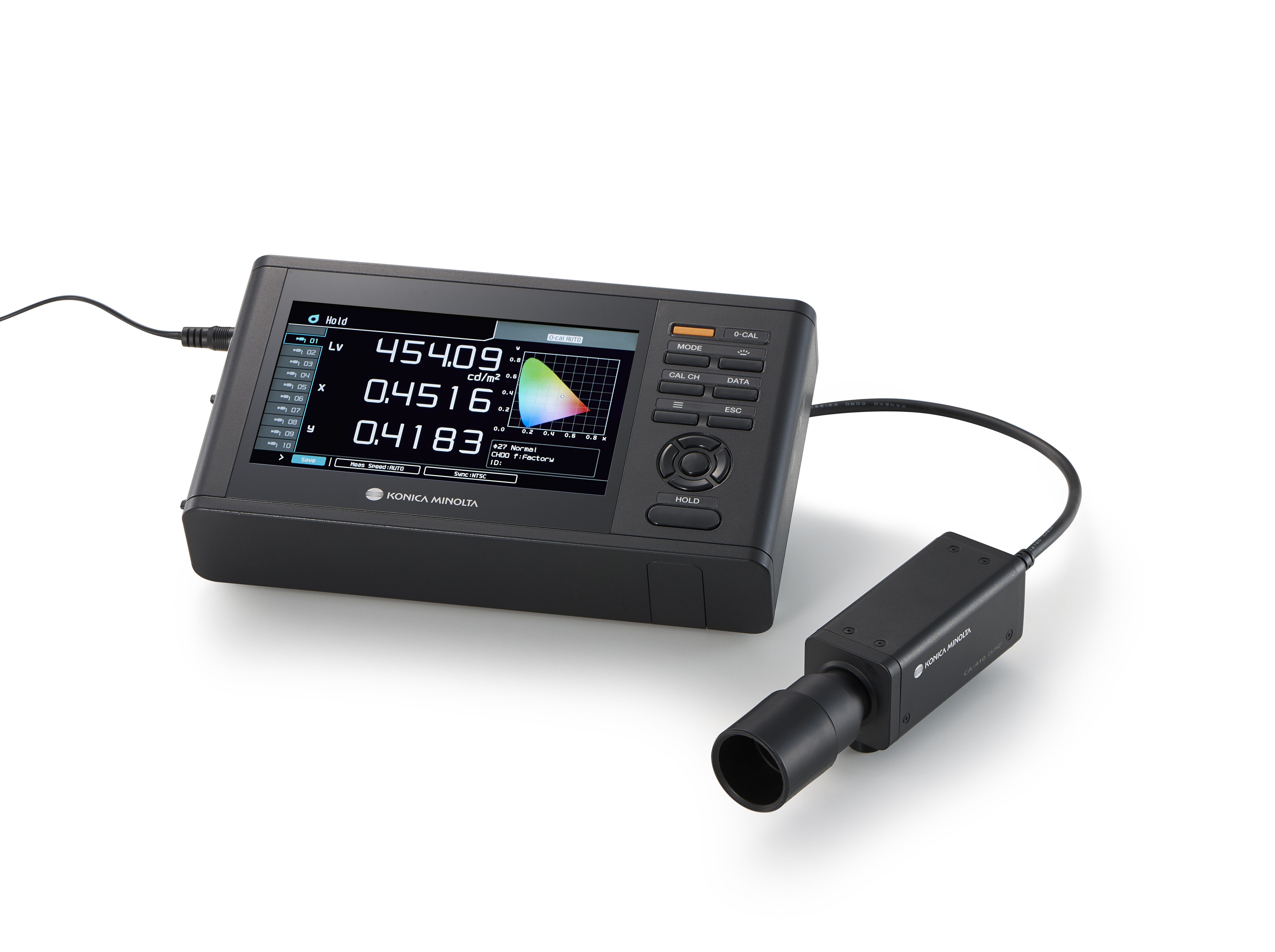News Releases
Konica Minolta to Launch CA-410, a Color Analyzer for Measuring a Wide Range of Displays Including OLED Displays
To Improve Productivity and Enhance Rich Graphic Expression of Evolving Displays
Tokyo (November 9, 2017) - Konica Minolta, Inc. (Konica Minolta) announced that it will launch the CA-410, a color analyzer for measuring ever-evolving displays such as OLED displays, on November 15, 2017.
The CA-410 is an optical measuring device used for inspection and adjustment of white balance*1 and gamma*2 at factories producing TVs, smartphone displays, etc. Designed as the successor of the CA-310, which is reputed for its rapid, accurate measurement, the CA-410 similarly offers high-speed, high-accuracy measurement of higher-dynamic-range (HDR) displays, including OLED displays.
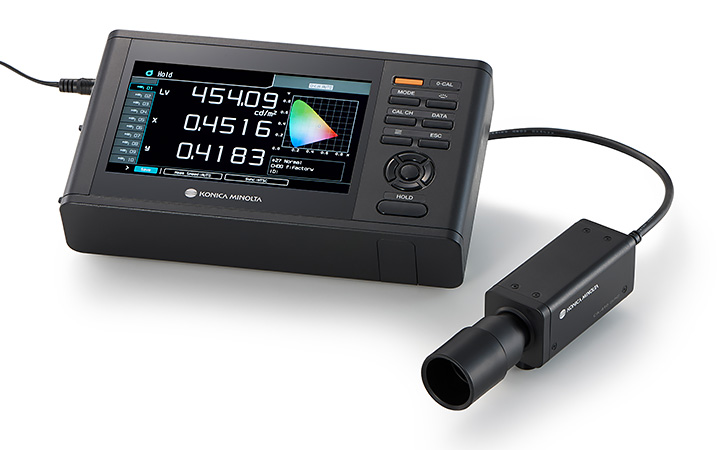
CA-410 Provides New Values
1. Accuracy-Guaranteed Luminance Measurement Range 25 Times Wider Than the Previous Model for Higher-Quality HDR Displays
Recently, demands for higher-quality images and video have been growing among smartphone users, due partly to dramatic increases in communication speed. In response, manufacturers are accelerating the development of higher-resolution displays with improved contrast ratio and color reproduction, such as HDR displays. As a result, manufacturers of such displays require a color analyzer with a wider measurement range, from extremely low to high luminance.

With its new sensor circuits, the CA-410 achieves an accuracy-guaranteed luminance range from 0.001 to 5,000 cd/m2, 25 times wider than the previous model. This increased measurement range will help manufacturers to control and improve the quality of high-resolution displays, enabling smartphones and TVs to show higher-quality images and videos.
2. Faster Measurement Speeds to Improve Productivity
The CA-410 can measure extremely low luminance levels of just 0.001 cd/m2 in one second, fast enough for integration into manufacturing processes. In addition, total measurement time is reduced by 30% compared to the previous model by improving sensor capabilities and CPU calculation speed*3. This allows the CA-410 to contribute to higher productivity at factories producing high-resolution displays, such as by reducing the gamma correction process time.
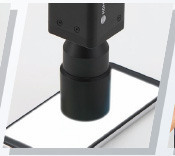
3. Easy Integration into Automated Processes for the Digital Manufacturing Age
In anticipation of the needs of the digital manufacturing age, the CA-410 is designed as a sensor that can be easily integrated into automated manufacturing processes. It allows measurements to be started and performed without manual tasks, and the probe can be connected directly to the computer to save space.
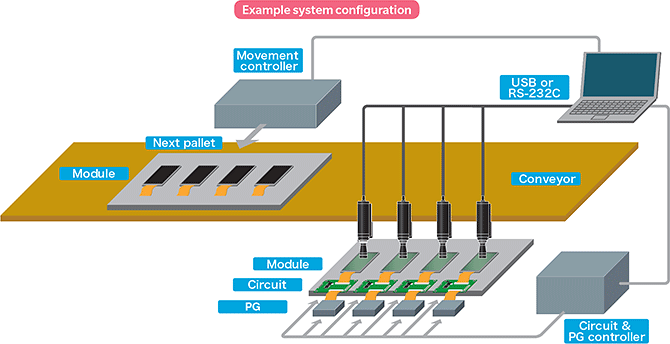
Main Specifications
(The following values are when using a normal CA-P427 probe.)
| Display range | Luminance | 0.0001 to 5,000 cd/m2 |
|---|---|---|
| Chromaticity | Displayed in 4 digits | |
| Luminance | Accuracy-guaranteed range | 0.001 to 5,000 cd/m2 |
| Accuracy (for white)* | > 0.001 cd/m2: ±9% > 0.01 cd/m2: ±2% > 0.1 cd/m2: ±1.5% |
|
| Chromaticity | Accuracy-guaranteed luminance range | 0.01 to 5,000 cd/m2 |
| Accuracy (for white)* | > 0.01 cd/m2: ±0.003 > 0.1 cd/m2: ±0.002 |
|
| Accuracy-guaranteed measurement speed | Lvxy (AUTO) | > 0.001 cd m2: 1 time/sec > 0.15 cd/m2: 5 times/sec > 2 cd/m2: 20 times/sec |
| Interface | USB 2.0, RS-232C | |
*Measured under Konica Minolta’s standard light source (6500K).
Konica Minolta’s Sensing Business and Optical Systems for Industrial Use Business
Konica Minolta’s sensing business started with the development of a built-in exposure meter for cameras. In the 1960s, the company released standalone exposure meters and has since been offering products and services for light and color measurement, such as illuminance meters, spectroradiometers, and spectrophotometers, for more than 50 years as one of the leading companies in this field. Konica Minolta has also been working with public organizations responsible for setting industrial standards around the world and supporting industry with its optical measuring technologies. In particular, the Color Analyzer series which the company has been offering and evolving over the past 35 years are now recognized as the de-facto global standard in the area of quality control of TVs and are used by the world’s major display manufacturers for a variety of purposes, including the inspection of smartphone and other OLED displays.
As part of its SHINKA 2019, the Medium Term Business Plan announced by Konica Minolta in 2017, the company is committed to carrying out strategies concurrently in three business areas—core business, growth business and new business—in its optical systems for industrial use business, which combines the company’s sensing business with its other resources.
In the core business for sensing, Konica Minolta seeks to capture a greater share for light-measuring products by capitalizing on the growing demand for OLED displays and other market changes, and for color-measuring products by developing new product applications for the automobile, food and building-material industries.
In response to increasing automation at production sites and the growing importance of data utilization, the growth business strategy aims to combine the visual surface inspection technology held by Radiant, a company acquired by Konica Minolta in 2015, with existing optical measuring technology to provide turnkey in-line inspection systems, thereby achieving high added-value, high-profit businesses.
For new business, Konica Minolta will leverage its sensing and image analysis technologies to build high added-value products ready for the next generation in three categories: digital manufacturing, Quality of Life solutions and status monitoring solutions.
Konica Minolta will continue evolving so that it can better anticipate the needs of not only its customers in the manufacturing industry but also end users, and offer quality products for the benefit of society.
*1: White balance is the process of adjusting the light intensity ratio of light in the three primary colors - red, green and blue – for accurate reproduction of white.
*2: Gamma is a measure of tonal response. Gamma correction makes the brightness and color of the black and white halftone appear more natural and smooth to the eye.
*3: Based on gamma measurement simulation compared to CA-310 under Konica Minolta’s test conditions (for 64 measurements). It excludes display startup time and wait time.

